Soapstone Wax versus Oil (and a Soapstone Review)
I often get questions about the pluses and minuses of soapstone countertops and I wanted to write a post on my experiences so far with them. We had our soapstone counters installed a full year ago and so I feel like I’ve given it enough time to give it a proper review! I decided early on to use soapstone wax versus oil and I’m going to go into my experiences so far with it here!
This post may contain affiliate links. That means if you purchase anything from these links I earn a small commission, at no extra cost to you! This helps support my blog, so thank you!
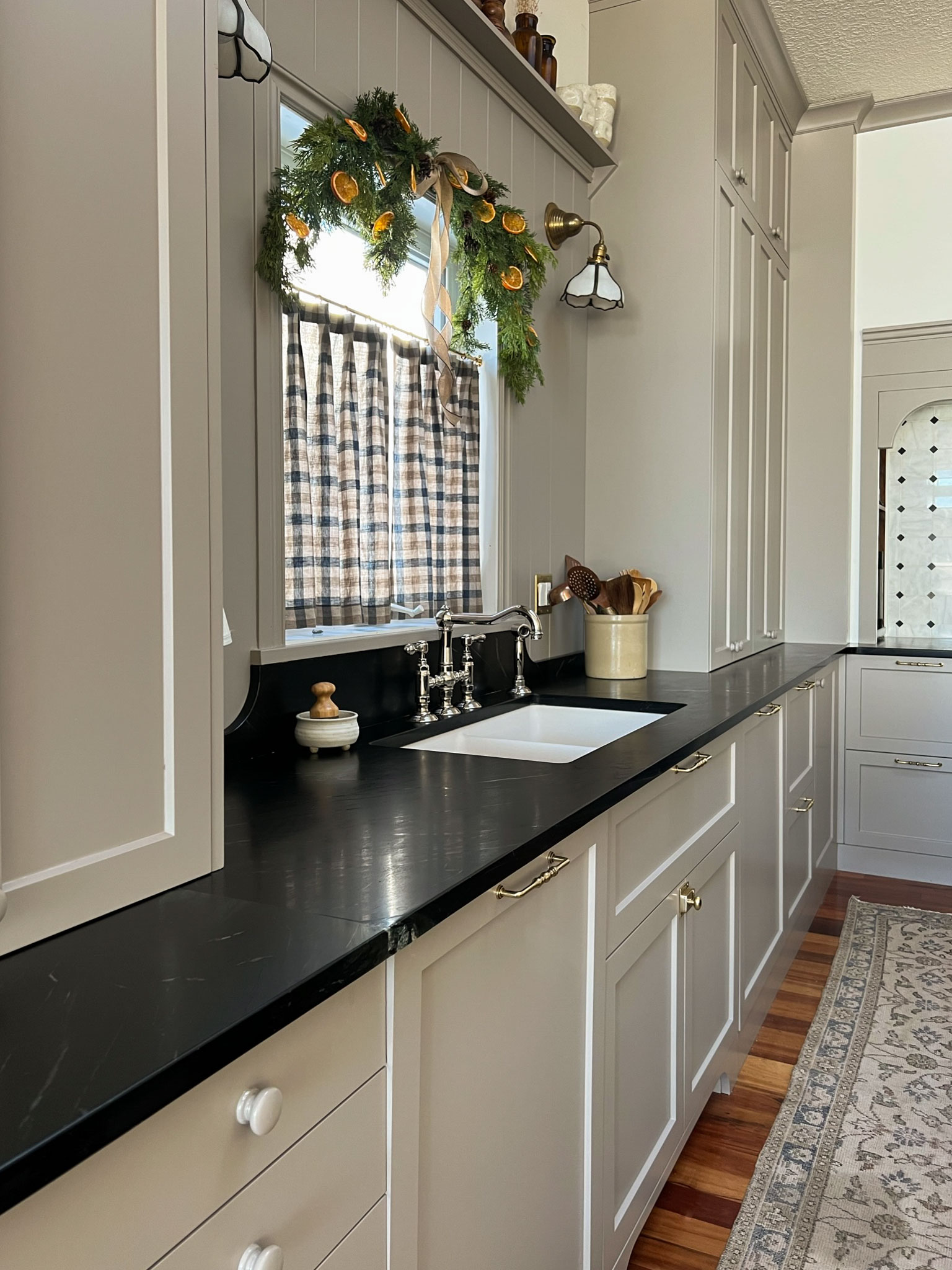
Table of Contents
- What is Soapstone?
- Why are soapstone countertops different than other natural stone countertops?
- How to Deal with the negatives – scratches and oil marks
- Scratches
- Oil Marks
- What if I have already oiled my counter and now I want to try wax?
- How to apply the wax
- Soapstone oil versus wax – re-application time
- Are soapstone counters for you?
- You might also like:
What is Soapstone?
Soapstone is a natural stone which has some unique properties which are different than some other stones because it has a high talc content, so it is a very soft stone (compared to other harder stones, like granite). Depending on the type of soapstone, they are usually grey or dark grey but can also be bluish, green, or brown in colour. It has a somewhat soft and soapy feel which is where the name came from.
The mineral properties of soapstone mean that it has some unique properties. It is soft and easy to carve (which also means it scratches easily), is not porous or absorbent and has high heat resistance.
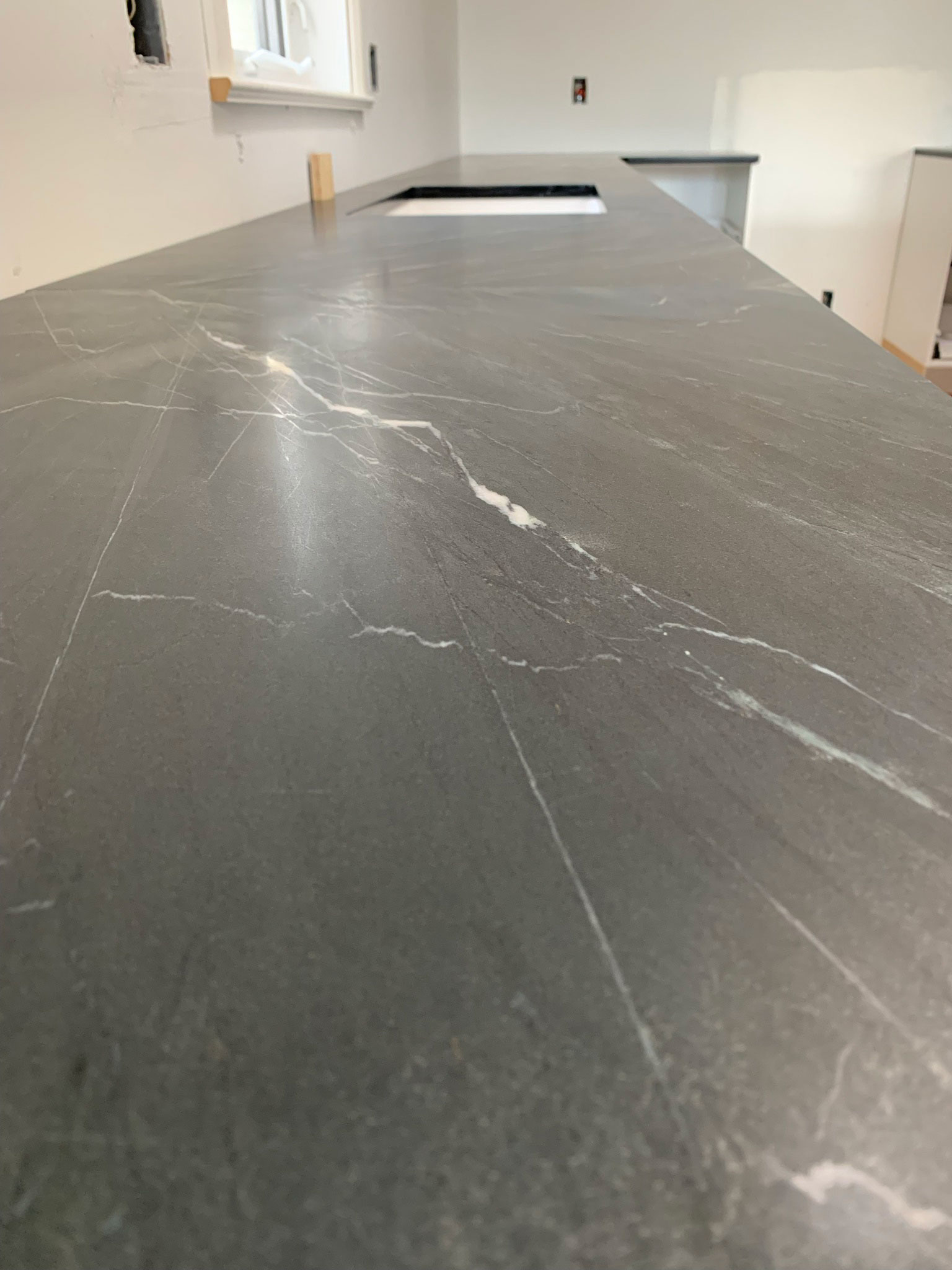
Why are soapstone countertops different than other natural stone countertops?
What does all this mean for your soapstone countertops? This means there are many benefits of soapstone, as well as some drawbacks.
You can not really damage it by using a common household cleaner as it does not absorb any chemicals. It won’t stain, either, like granite or marble can, from food spills like acidic foods or tomato sauce.
Because soapstone is so heat resistant, you also don’t really need to worry about damaging it with heat. I have placed a hot pot directly on my soapstone without issue. It is easy to clean and maintain.
So what are the drawbacks? There are two drawbacks, in my opinion. The first one is that it is soft, so it scratches easily. The second is that it discolours pretty easily with anything oily, even so much as a hand print. However, both of these things are easy to deal with, so lets get to it!
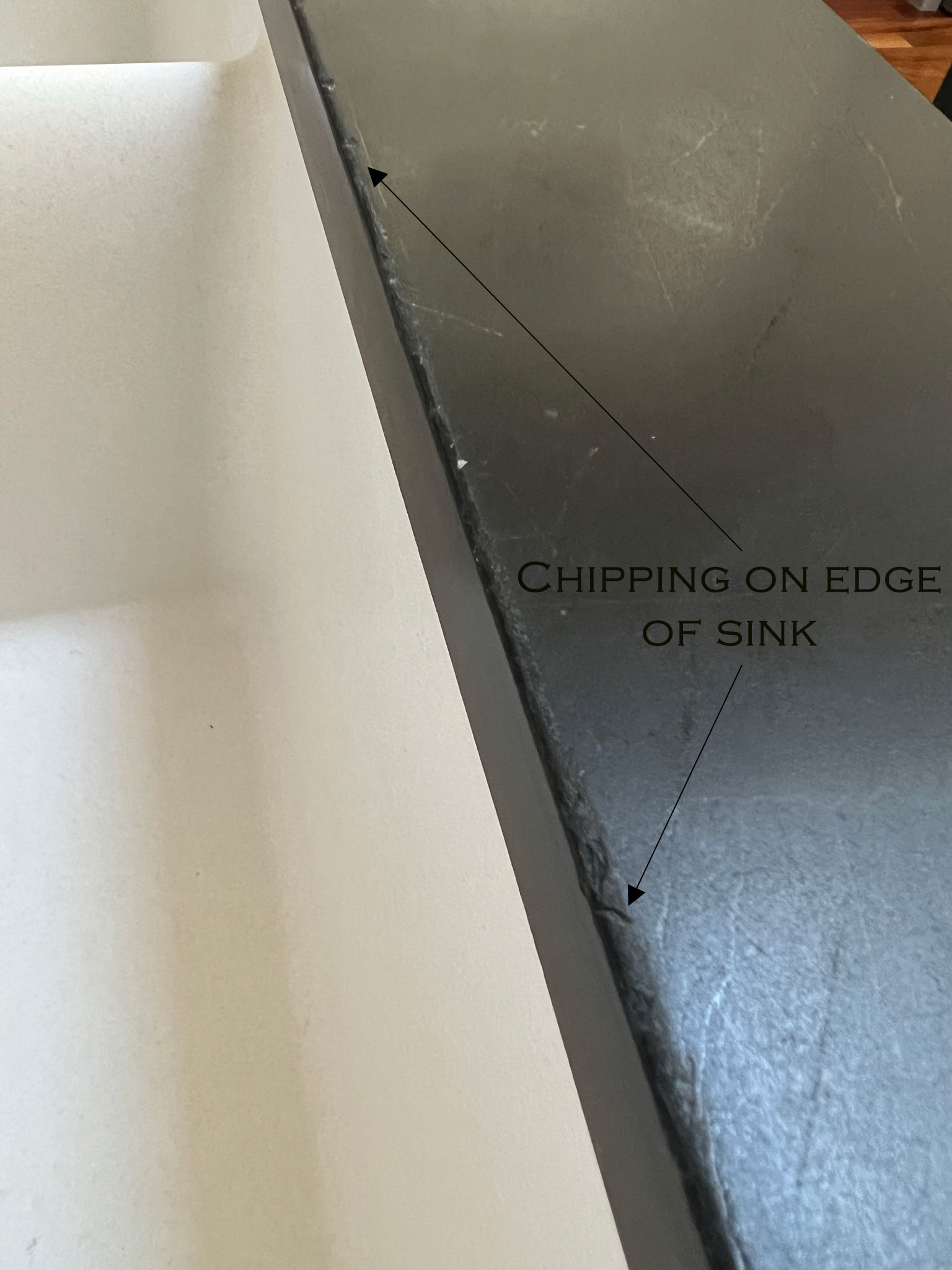
How to Deal with the negatives – scratches and oil marks
You may wish to embrace the natural beauty and natural patina of soapstone as it ages, and that is perfectly okay, it is a matter of preference. You do not need to do anything to soapstone in order to protect it. If you like the natural color of your stone in it’s natural state, and are ok with a few small scratches over time and oil marks on the surface, you do not need to do anything at all to the surface. Over time, cooking and oil from your hands will naturally darken the stone anyway.
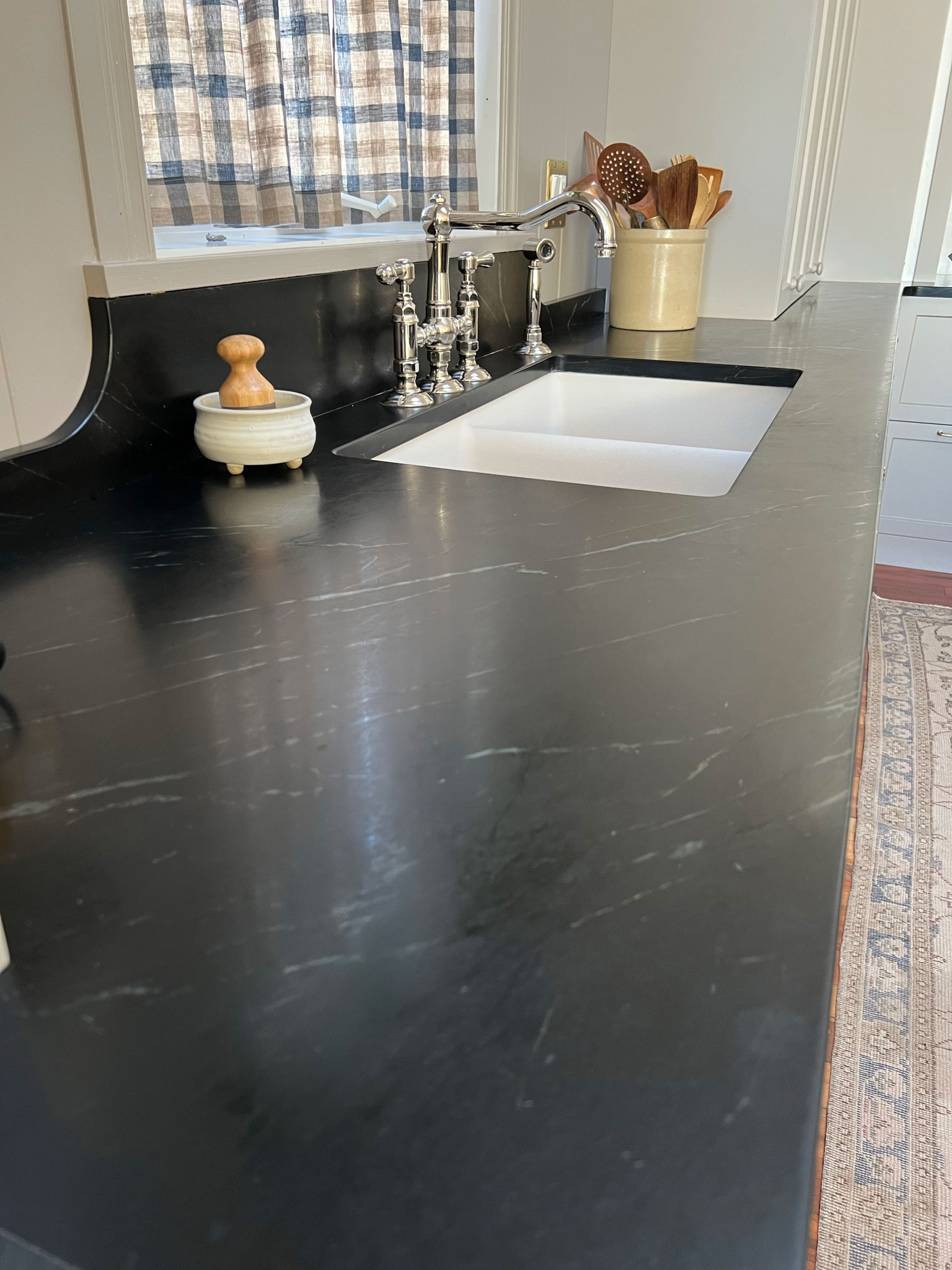
When I first installed my soapstone, I gave it a little time to see what I thought of it in its natural state. I found that I really did not like the oily marks that were left by hand prints or even splatters and food oil stains, it looked dirty all the time and I wasn’t willing to wait for my stone to naturally darken. I’m all for natural patina, but that was a little MUCH. So I looked into what could be done to oil my soapstone, and did a little experimenting on an area that was going to be covered by my countertop cupboards.
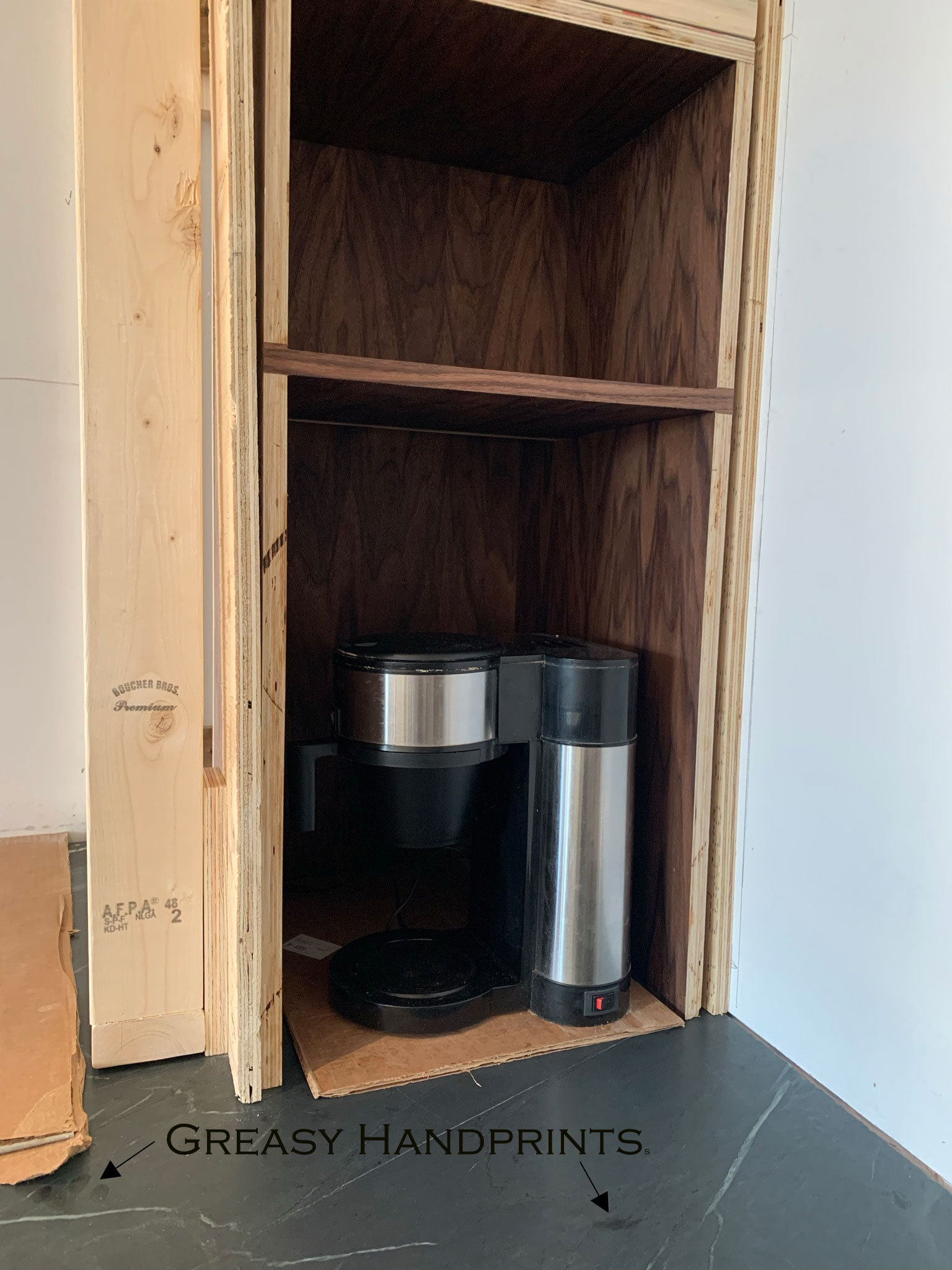
Scratches
Scratches are actually pretty easy to deal with, because you can just SAND THEM OUT! Yup, you can just get a little high grit sandpaper and get the scratch out. Deeper scratches might take a bit more elbow grease, but I haven’t had to do that yet. Of course, this will only work if you have a honed finish and it has not been polished, which is generally how soapstone is done.
If you have an oiled or waxed surface, you would need to re-apply the wax or the oil onto the freshly sanded spot, and it will blend right in.
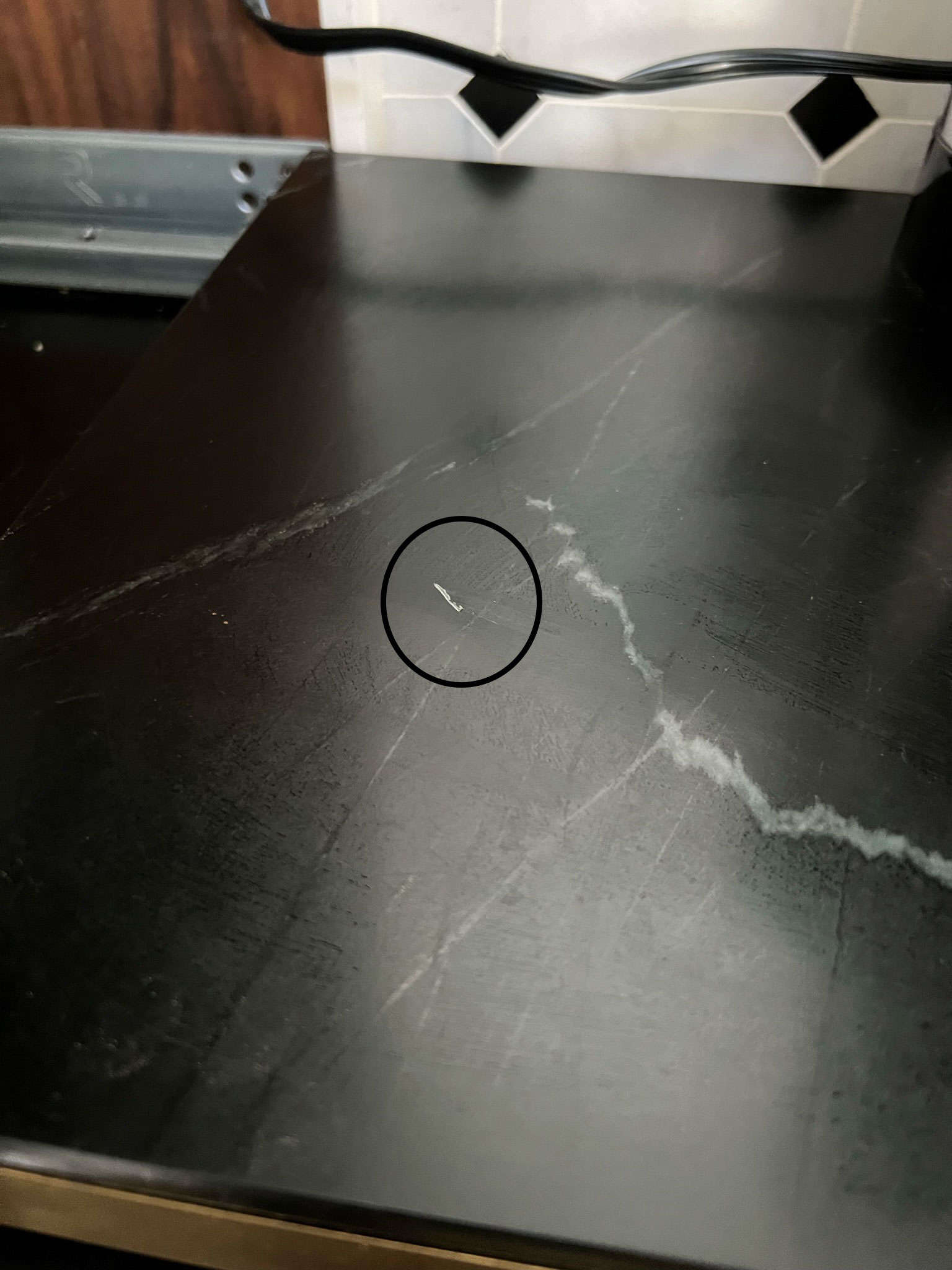
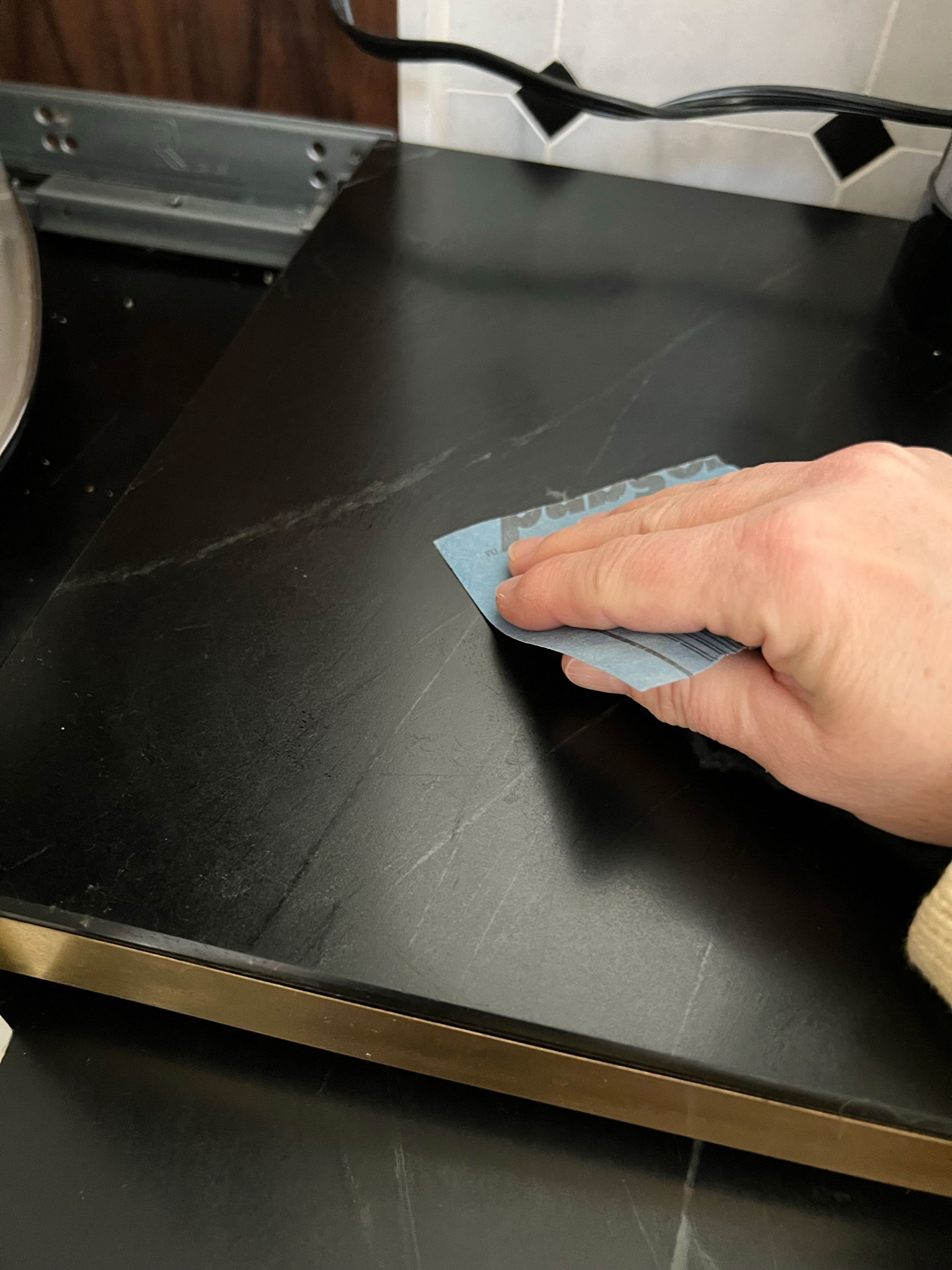
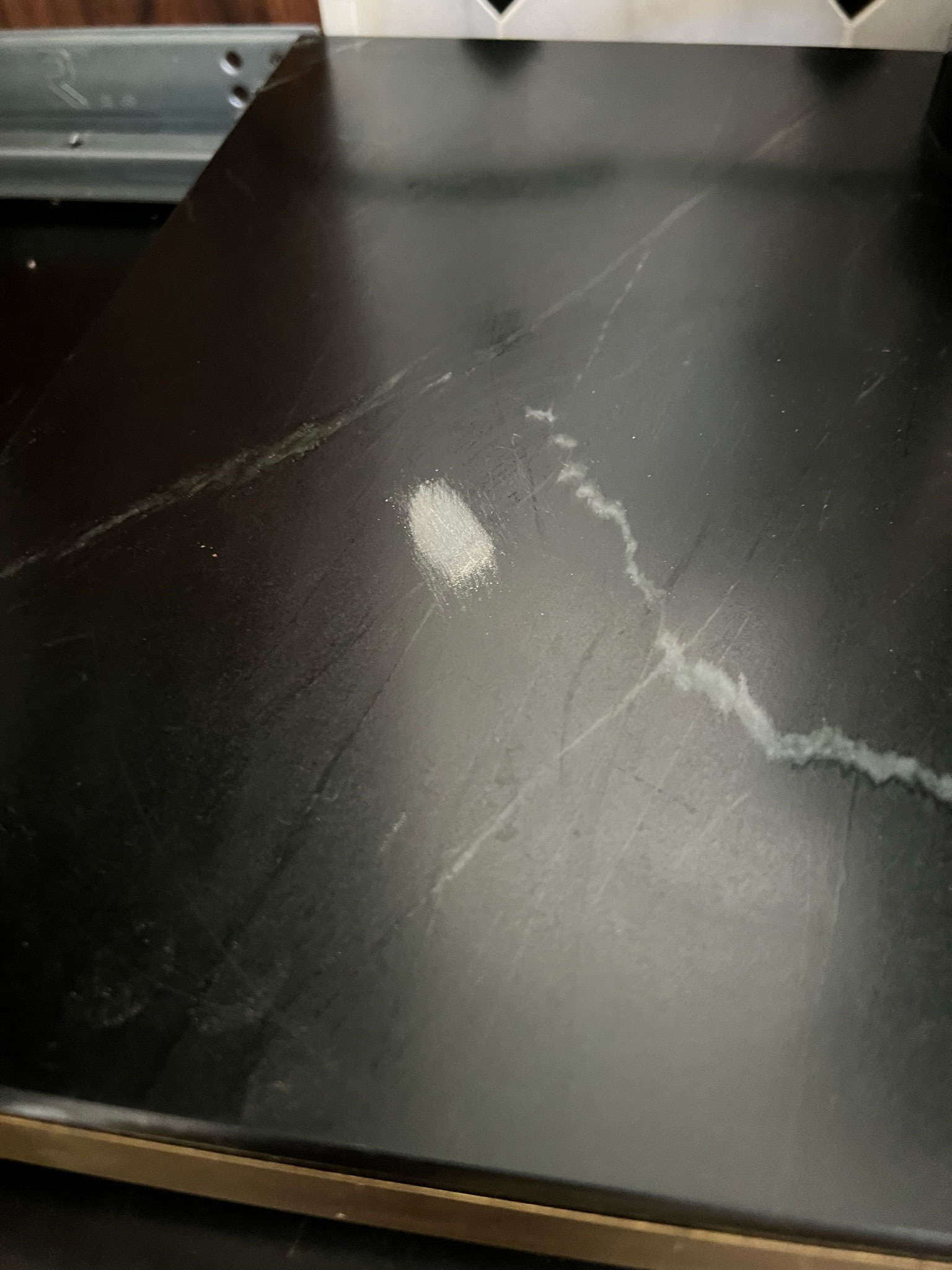

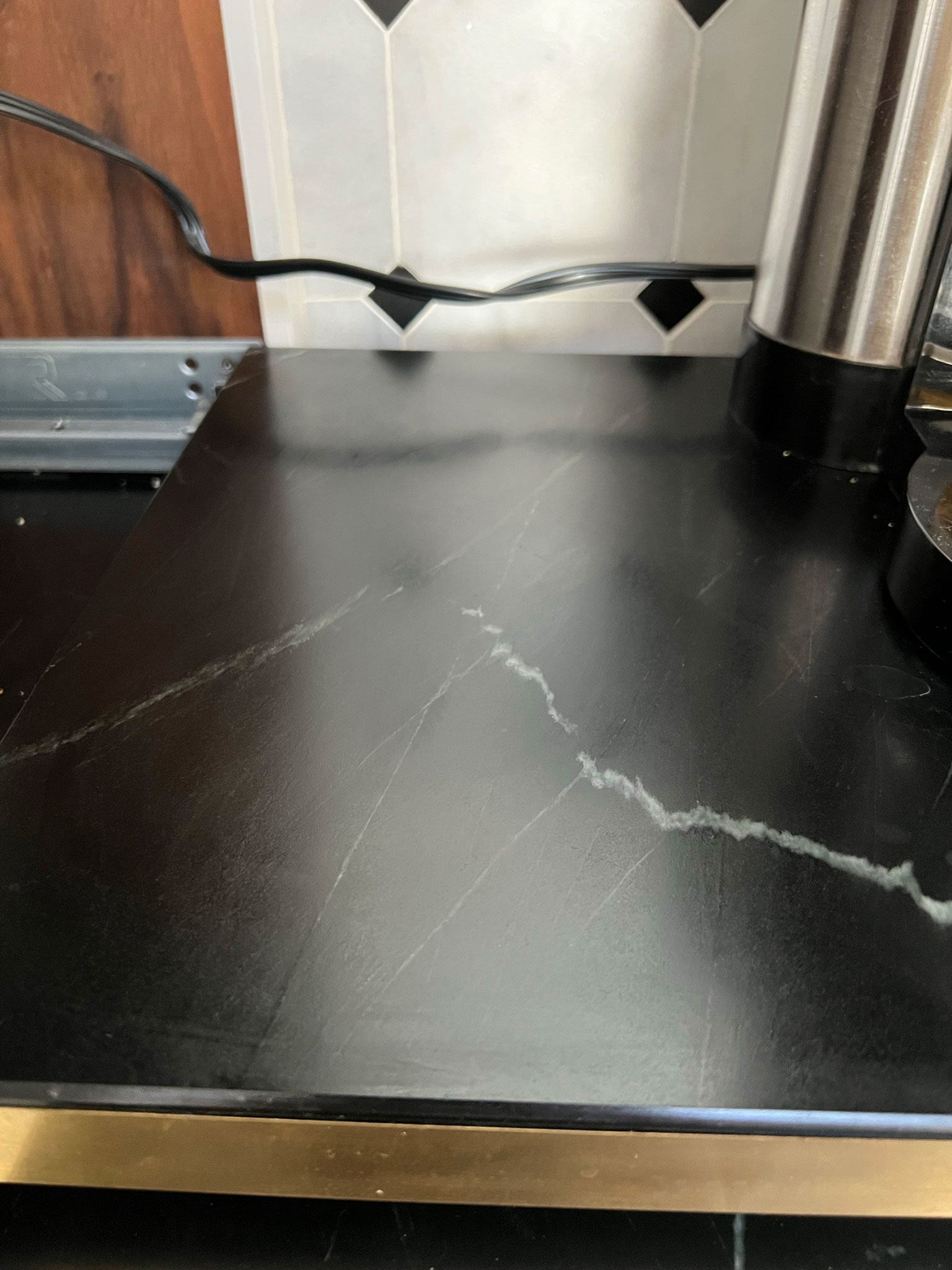
Oil Marks
In order to deal with the oil marks you basically have to oil or wax the whole countertop so the whole thing looks the same. This results in a deeper color and that way, any oil marks do not show up on the surface.
Soapstone Oil Versus Wax
Once I decided I was going to oil or wax my countertop I decided to give oil a try in a hidden area of my counters to see how it held up and how it looked. I just used a little drug store mineral oil treatment on a small spot to see how it looked. I liked the deep color that the oil made, but after a couple of days I could tell that it was drying out and it was not going to last a long time. I have heard that the initial few years of oiling soapstone requires regular maintenance and repeated applications but that eventually, it will require less and less. But I could tell that the oil was going to require probably a weekly application, at least at first.
The other thing I didn’t care for with the oil application was that it was…. well… oily. Even after I buffed it out, it seemed sort of oily and I was worried that anytime I leaned on the fresh oiled counters I would risk staining my clothes.
A friend of mine told me about soapstone wax, specifically, Real Milk Paint Company soapstone sealer. The wax is made out of food grade walnut oil and carnauba wax flakes that are blended to create a wax like substance. I thought it was worth a try and so I grabbed some to test.
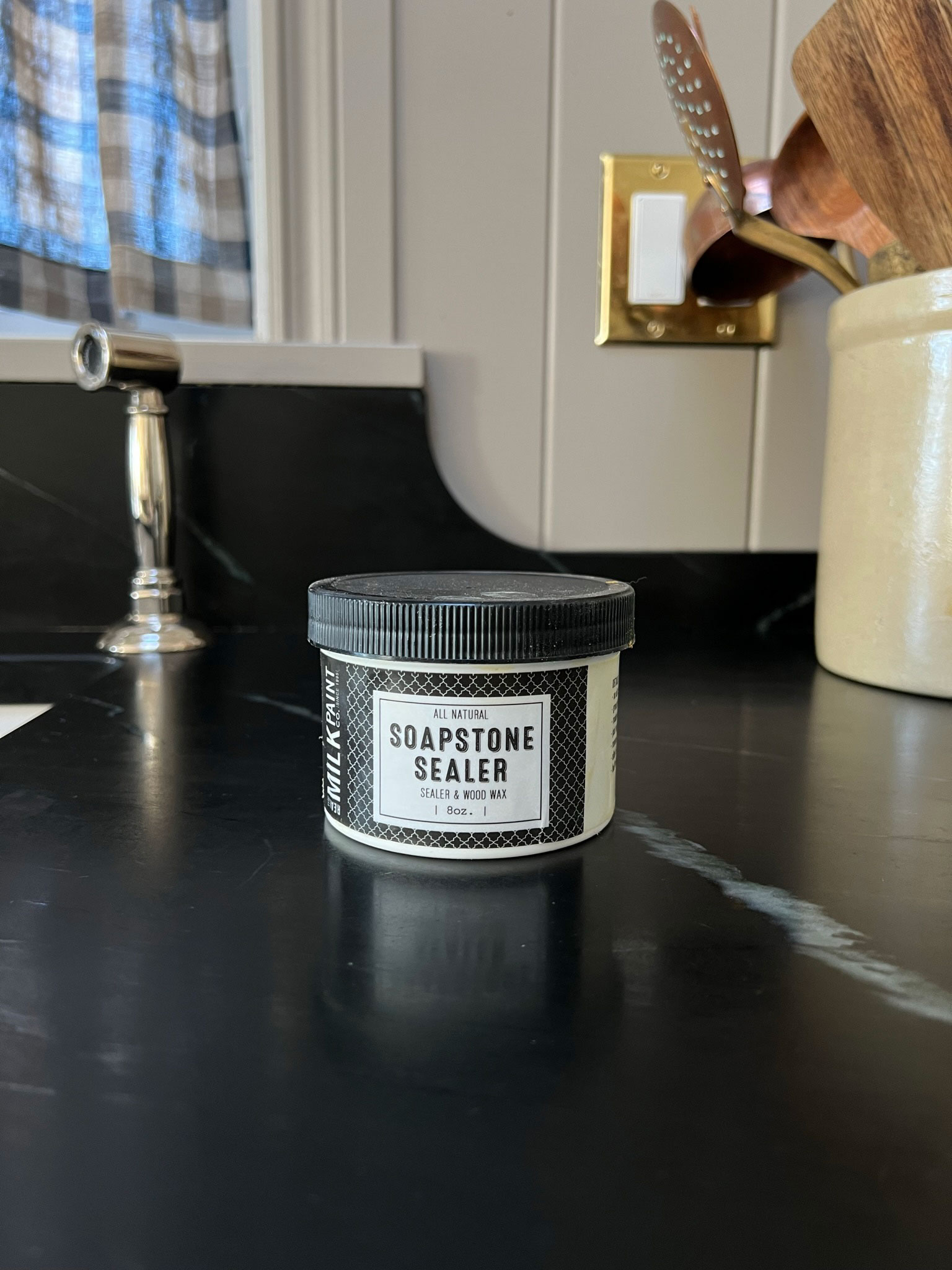
In my soapstone oil versus wax test, the first benefit that I noticed on my test spot is that the wax didn’t appear to dry out or evaporate as the oil did after a few days. The second benefit was that it did not have an oily appearance or feeling, once the wax was buffed in it just looked smooth, dark and beautiful with a nice lustre without being oily with a wet look. I decided wax was the way to go for me!
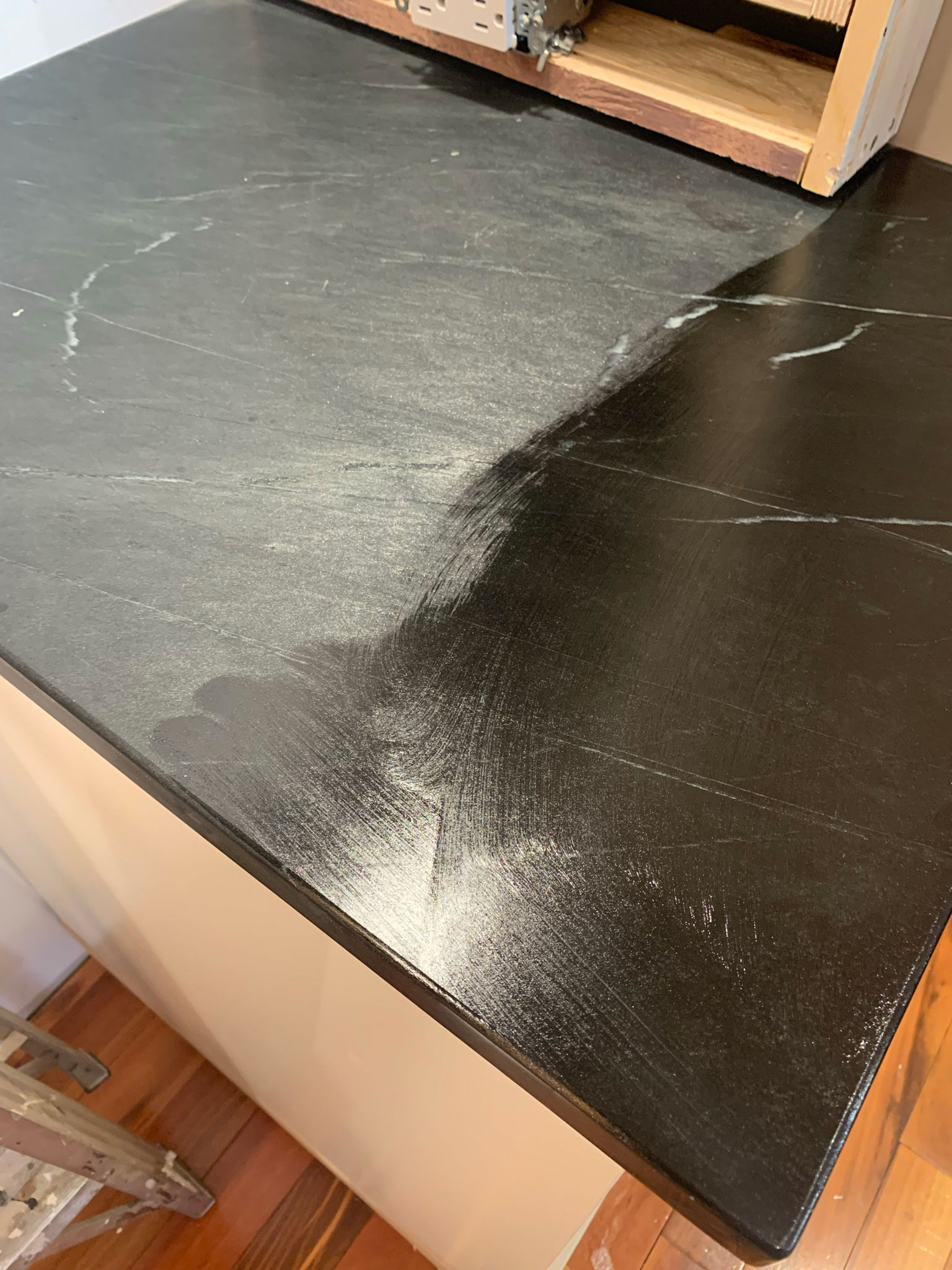
What if I have already oiled my counter and now I want to try wax?
If you have already used oil, you can use acetone or denatured alcohol to remove it before applying wax.
How to apply the wax
In order to apply the wax to the countertop, I took an old sock and placed it over my hand and added a bit of wax to the surface of the soapstone, and applied it to the counter using a circular motion. I applied it liberally all over, and let it sit for about 15 minutes. I l then buffed the wax out with a soft cloth to remove the excess. And that’s basically it!
The wax does need to cure for a few days, so we tried to leave everything off the countertop for a week or so. I did this before the kitchen was really in use so that was not a problem for us at the time, but it’s best to time the application of wax right before a time when the kitchen won’t be used for a bit, like right before a holiday.
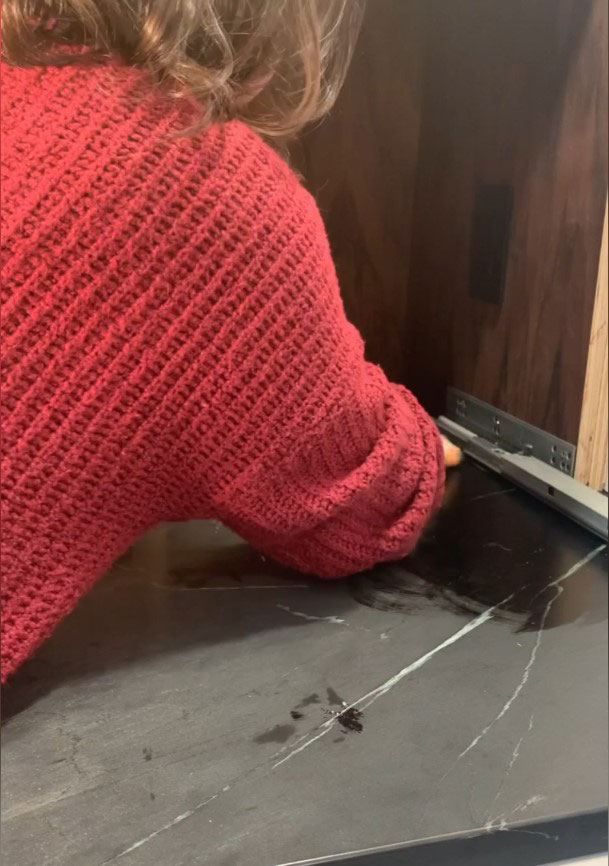
Soapstone oil versus wax – re-application time
The huge benefit, in my opinion, of soapstone oil versus wax is the reapplication time. While oil would need to be reapplied as much as every week, in the first year I have only re-applied the wax one time. Honestly, I only re-applied it because we were going on a trip and it seemed like a good time to do it (when the kitchen was not in use), not because it really needed it.
The wax really did most of the magic the first time we used it. The wax also does a good job of repelling water and really enhances the beauty of the soapstone.
I do not know if I will need to keep applying the wax over time but my thoughts are that I may have to do it once a year or so, but the application process should become further and further apart as the natural stone surfaces naturally take on the darker colour. Eventually, I’m sure we can skip to doing the was every couple of years or even stop it entirely.
I am not sure I would have liked my soapstone counters quite as much had I decided to use a soapstone oil instead. The continuous reapplication and oily surface I think would have made these countertops a bit of a headache. Therefore, I think the winner in the soapstone oil versus wax, in my mind, is definitely wax!
Are soapstone counters for you?
A few people have asked what I think of my soapstone and if I would do it again. I really do love them and I would one hundred percent do them again! However, you do have to be aware that it is a living finish and it is not going to look perfect forever. Scratches, chips, and patina are a part of soapstone, so if you want your countertops to always look perfect and be maintenance-free, then soapstone is not for you.
If you are ok with a little bit of imperfection and a small amount of maintenance, the benefits of soapstone outweigh the drawbacks, in my opinion.
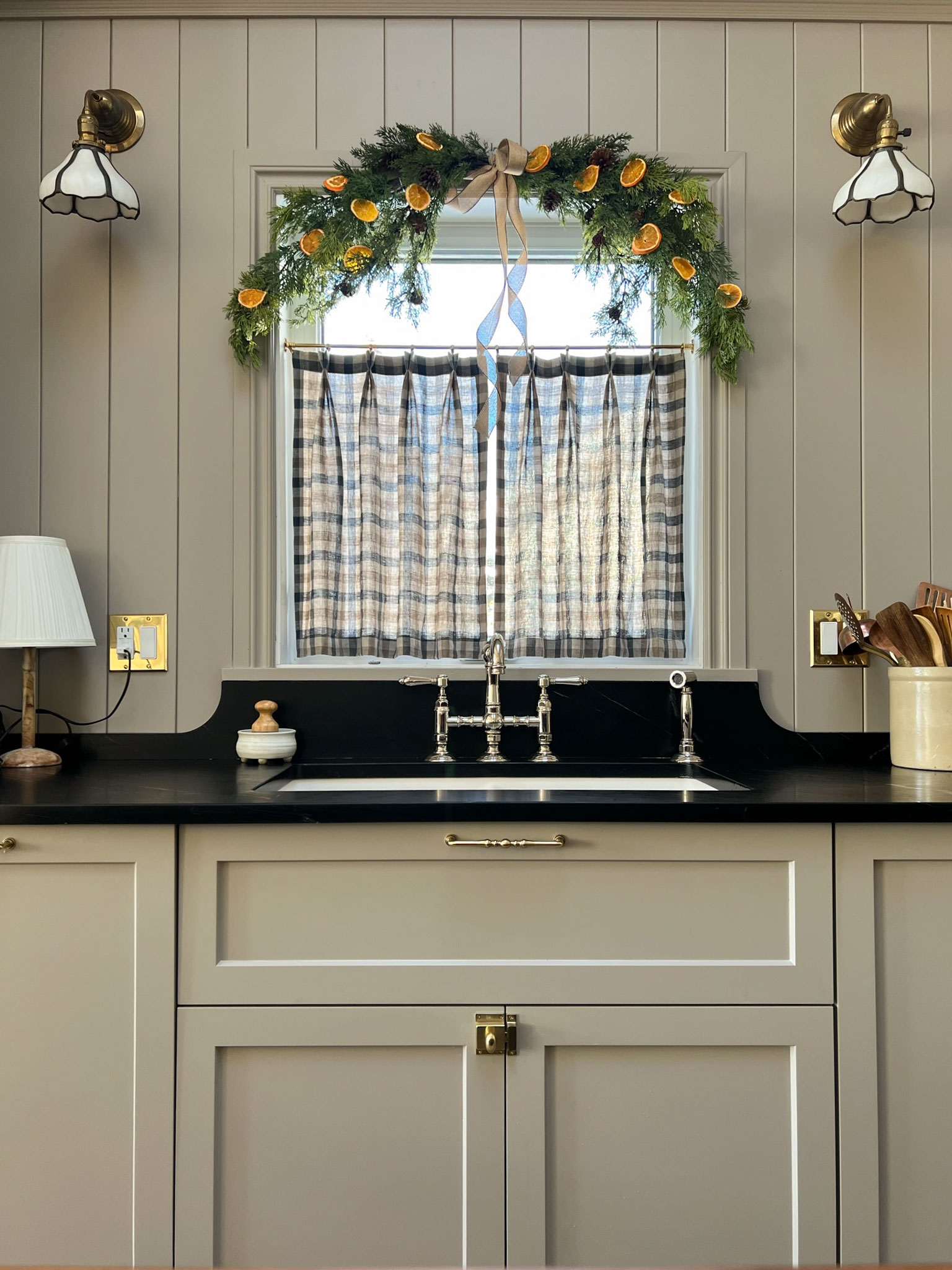



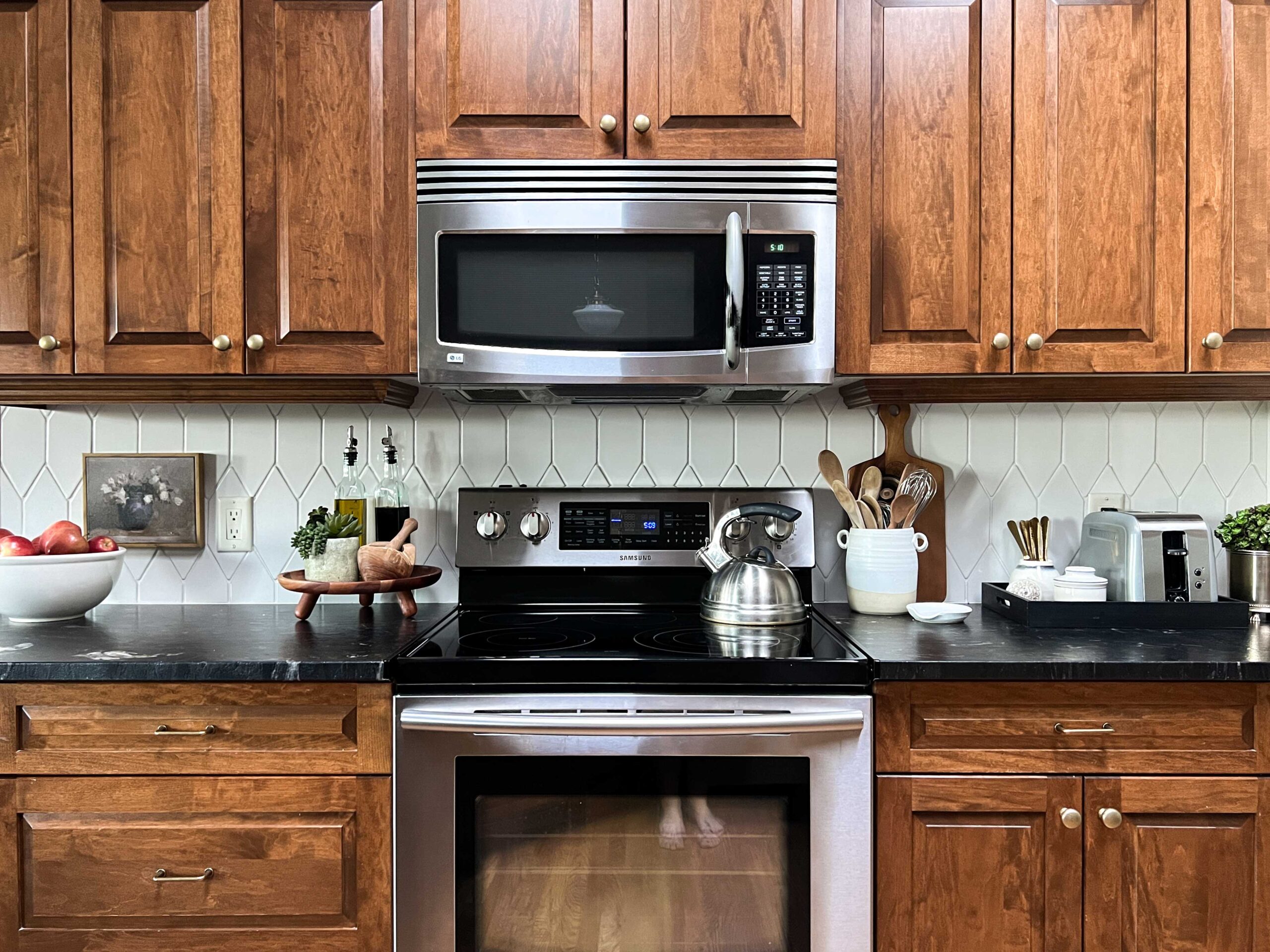
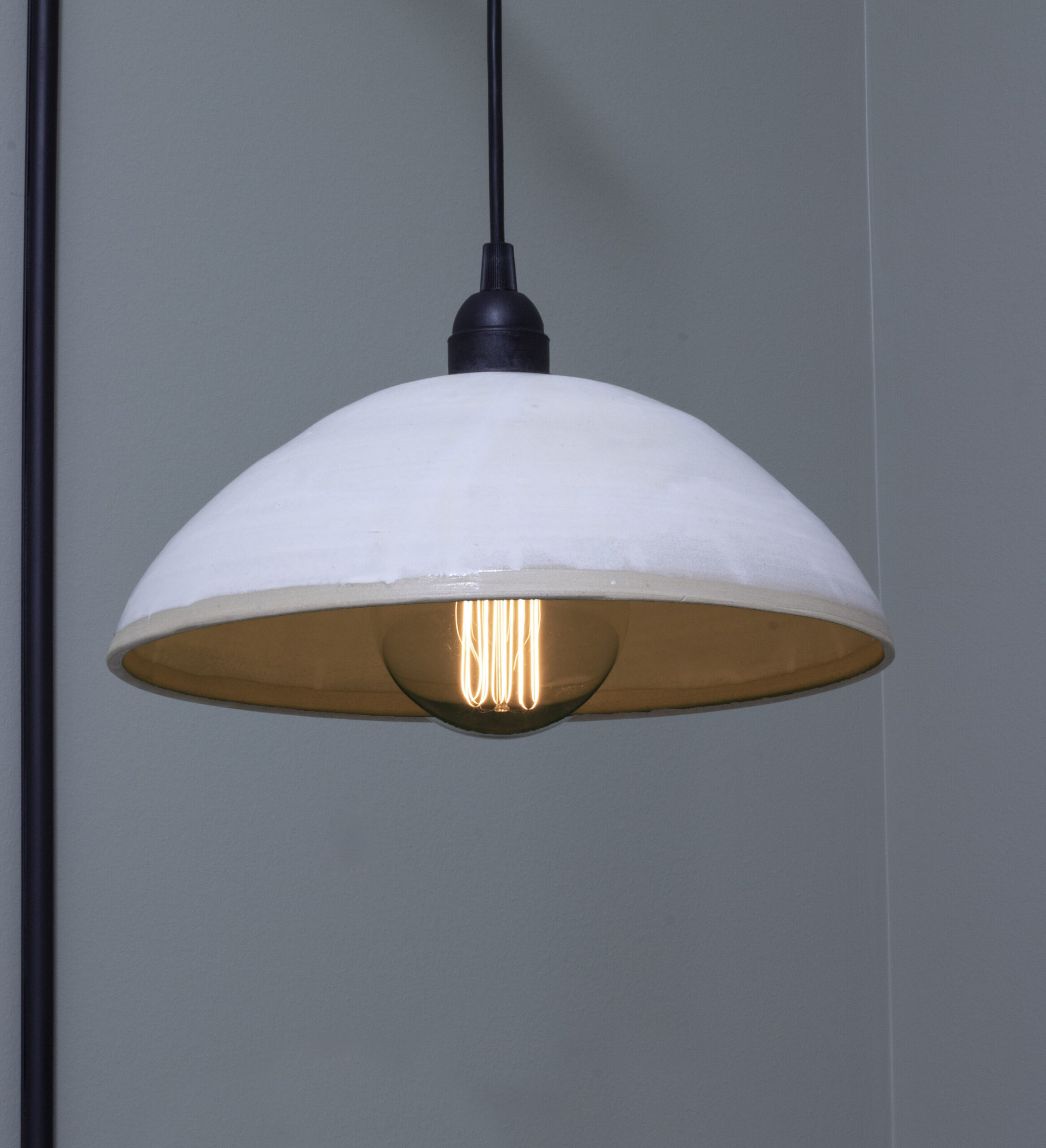
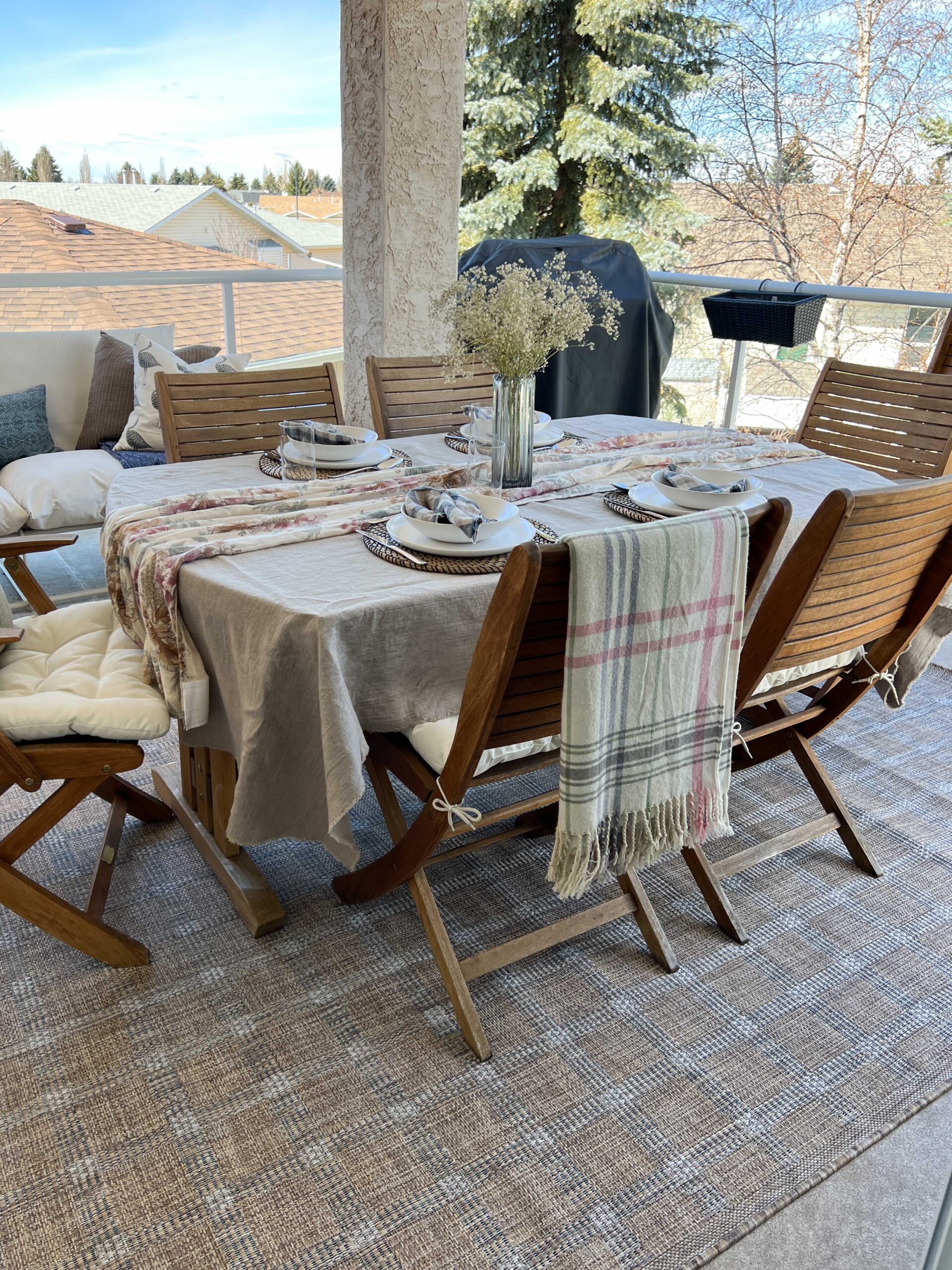
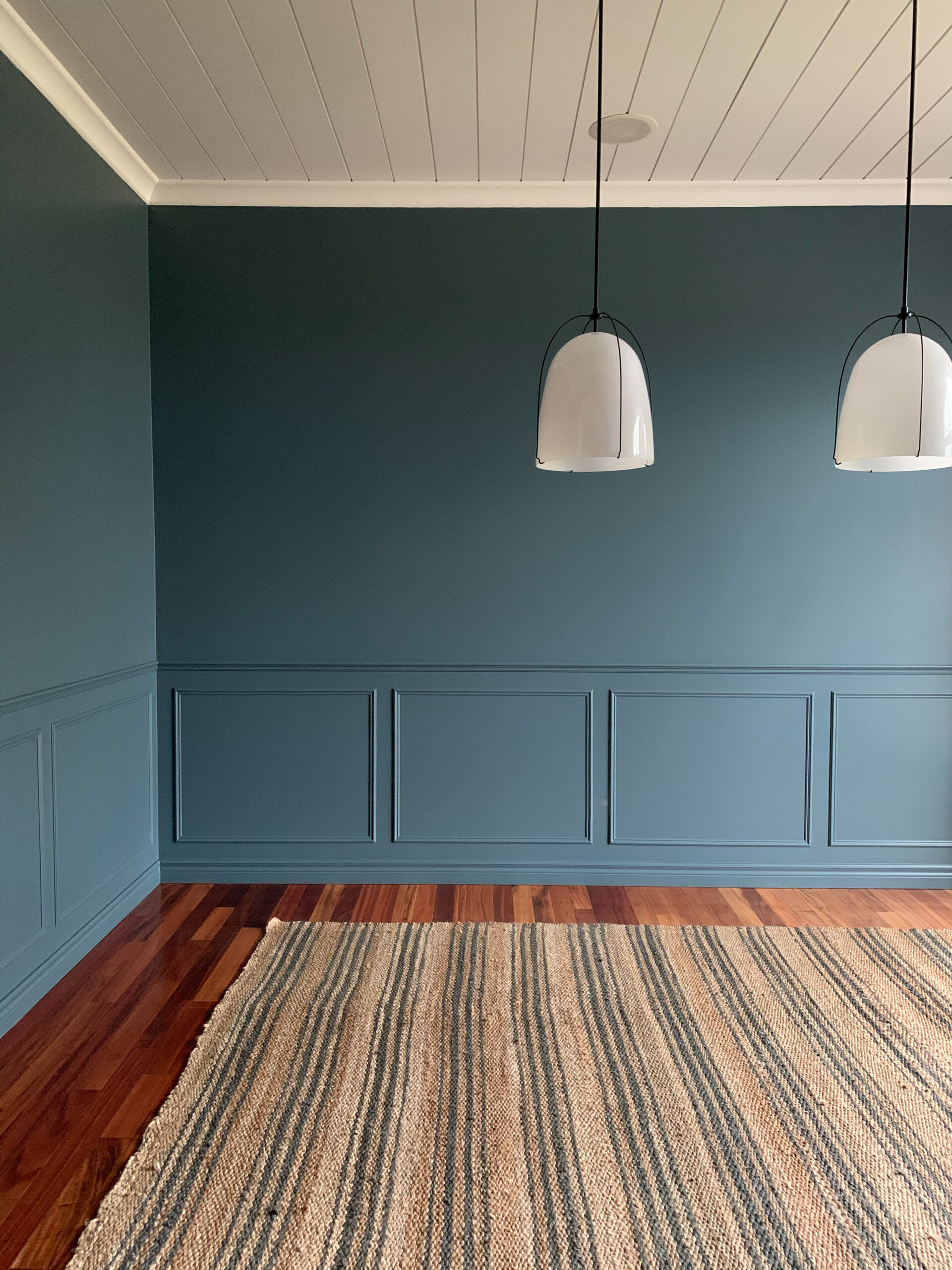
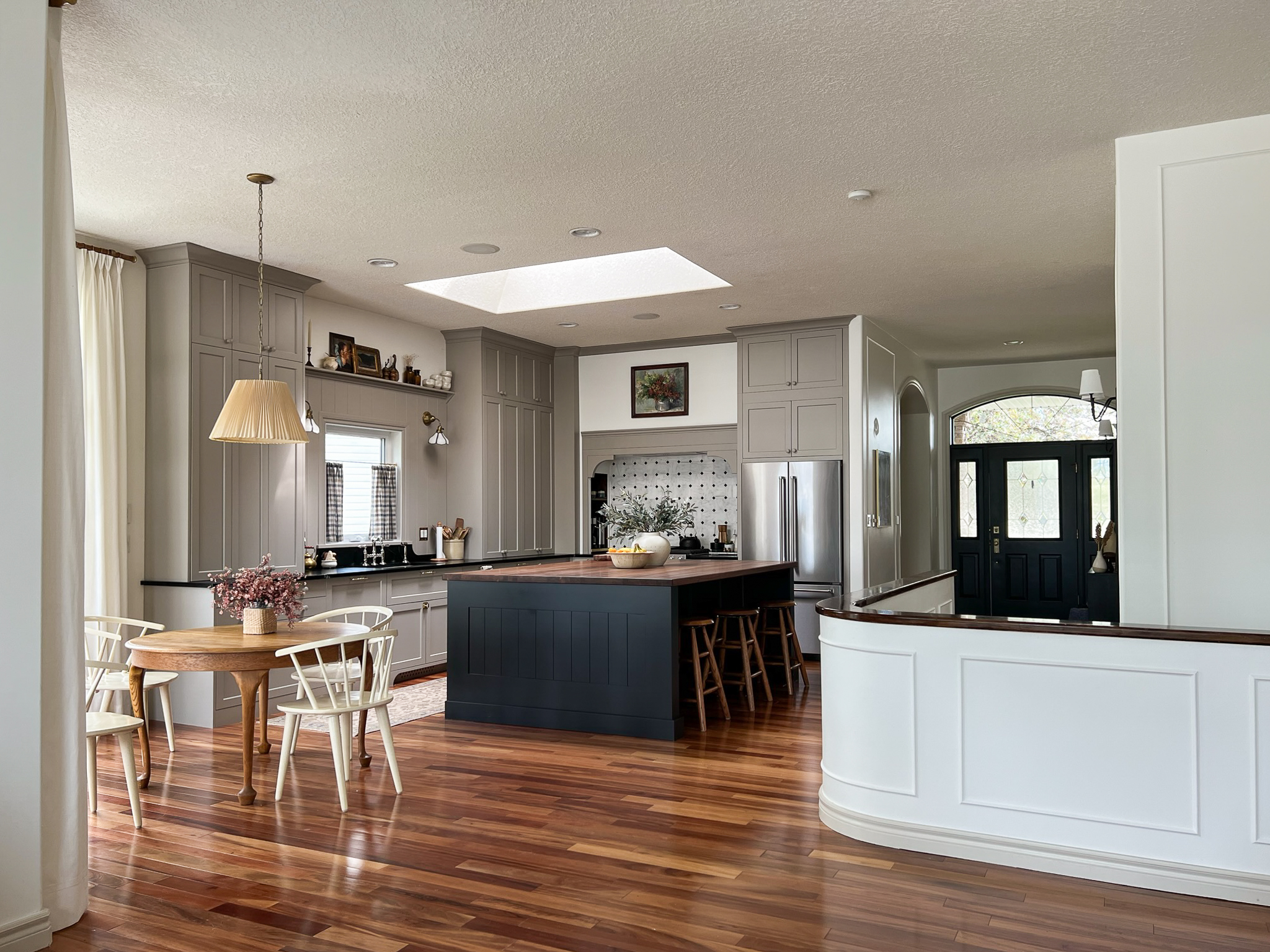
Some soapstones are much harder than others. We have one that still looks as nice as the day it was installed 9 years ago. We use oil, but not often. Every slab is a little different, so be sure the stone place sets the slabs you want aside just for you.
Good point, thank you!
Great, informative article! I love soapstone countertops. I had them in my last home, and I’m planning to install them when we remodel the kitchen in my current home. I oiled them occasionally and experienced the same thing – it seemed to dry out within a few days. Am curious about the wax… Wondering if people with tree nut allergies would have an issue with the wax, as part of it is derived from walnuts?
That is a good questions I am not sure! It would likely be something the wax manufacturer could answer.
we are about to have soapstone installed and I’m so excited!
I’m curious if you would choose an over mount sink, if your could do it over again. I thought I had done my research but I had not seen anyone with chips like yours around the sink. I’m a little nervous about that part now. luckily our sinks can be over or under mounted but not sure which way to go. our sinks will be black so I think it will blend in no matter what but just curious about your opinion. thank you!
Hi Nicole! I would still do an undermount, yes! Those chips I show in this post are zoomed in and exaggerated, in real life I do not think anyone has ever really noticed.
Hi Erin! Thanks for this great article. We have soapstone counters, and I love them. We oil them rarely (like 1-2x/year), and I love the look it gives, but of course it dries out quickly. Would you still recommend doing something to our counters before applying wax?
I would contact the folks at the Soapstone Wax company and ask for their advice on that! I think it would be a good idea to remove the oil first, better safe than sorry!
We are installing soapstone counters in our new kitchen (can’t wait!), and I have to pick a paint color for the cabinets. I’m torn between white and greige. Can you tell me the name of the color you used?
It is Benjamin Moore Indian River!